| |
 
HIDDEN
IN THE HANGERS
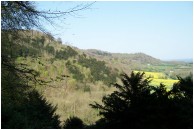 |
|
The Hangers lie to
the north of Petersfield, and the name is
apparently exclusive to Hampshire,
referring to the beech woods which seem
to hang from the hillside. Selborne is
without doubt the most famous, but others
are similarly beautiful, and the whole
ridge from Selborne to Steep is a fine
example of woodland beauty, particularly
lovely in spring and quite majestic in
autumn.
Many visitors are drawn to Selborne
through its association with Gilbert
White, the eighteenth century Curate
whose Natural History has remained in
print for more than two hundred years.
But hidden among a warren of secret
footpaths and sunken lanes are other
delights, and other literary
associations, which are often overlooked. |
After the famous zig-zag at
Selborne, the best known footpath is up the
Shoulder of Mutton, near Steep. Here a stone was
erected in 1937 commemorating the poet Edward
Thomas, who was killed at the Battle of Arras in
1917. He lived in Steep, and the surrounding
countryside inspired many of his finest poems.
The view south along the Downs from the stone is
breathtaking on a clear evening, stretching from
Butser right away to Cissbury Ring, north of
Worthing.
Another luminary who travelled this way was
William Cobbett, who visited Hawkley on horseback
in November 1822. He published a description of
his journey in his Rural Rides eight years later:
“We came, all in a moment, to the very edge
of the hanger! Never, in all my life, was I so
surprised and delighted! I pulled up my horse,
and sat and looked; and it was like looking from
the top of a castle down into the sea.” His
book, too, is still on the shelves.
Hidden among the hills there are remote, lost
villages: Colemore, Priors Dean and Newton
Valence. The first two were separate parishes
until 1932, but have always been closely
associated, both manors having been granted to
Southwick Priory at the turn of end of the 12th
century.
After the
Reformation Henry VIII gave them to his
wives, Anne of Cleves and Katherine
Howard, subsequently passing to the
Tichbourne and Compton families, whose
memorials remain in Priors Dean Church,
which is unfortunately locked.
Colemore Church, dating from the end of
the 12th century, has always had a
turbulent history, being virtually
ruinous on several occasions yet always
being repaired. It is now redundant and
in the care of the Churches Conservation
Trust. A 17th century Rector, Rev. John
Greaves, had three remarkable sons: John,
born in 1602, became a celebrated
mathematician, Edward was physician to
King Charles I and Thomas followed
oriental studies and had a distinguished
career at Oxford.
|
|
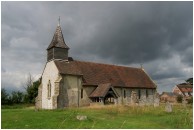 |
The village of Priors Dean
consists of little but the delightful little
church - alas, always locked nowadays - and the
mellow old brick manor house immediately
opposite. A mile to the north stands Goleigh
Farm, dating from the 15th century or perhaps
earlier, the ground floor built of ironstone and
the upper storey of timber, with ironstone and
plaster filling.
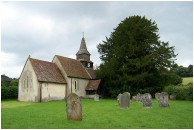 |
|
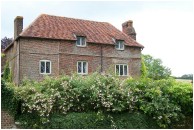 |
|
Yet for all its
remoteness, Priors Dean is known far and
wide for the White Horse, the celebrated
Pub with No Name. The frame of the inn
sign, standing beside the road from
Petersfield to Alton, has been empty from
time immemorial, yet visitors find their
way to the pub in droves.
Here, in what was at one time a smithy
beside the old coach road from Midhurst
to the Midlands, we come across the ghost
of Edward Thomas once again, for this
isolated inn was the subject of his poem
Up in the Wind. |
A little to the north lies
the village of Newton Valance, recorded in the
Domesday Book as Newentstone (Newton). In 1249
Henry III granted the manor to his half-brother,
William de Valence, thus giving the village its
modern name. The old church, beautifully
positioned beside the manor House, has been
heavily restored, but is keeps its ancient yew, a
feature it has in common with Priors Dean and
formerly with Selborne.
Yews have had a
special significance since pre-Christian
times, keeping their leaves in winter
symbolizing survival and the continuity
of life, so they were often grown on
pagan sites on which Christian churches
were later erected. Saint Patrick and
Saint Columba venerated the yew, and
fifth and sixth century plantings may
well have resulted in many of the old
churchyard yews found today. Priors Dean
and Newton Valance are famous examples,
and Selborne was perhaps the best known
of all until it was blown down by the
gale of January 25th 1990.
The Hangers may be less glamorous than
the Downs, but they are hugely rewarding
to those prepared to search for their
secrets.
|
|
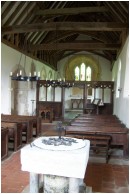 |
Tom Muckley, November 2004
This article was originally
published by the
Petersfield Post
tommuckley.co.uk
|
|






